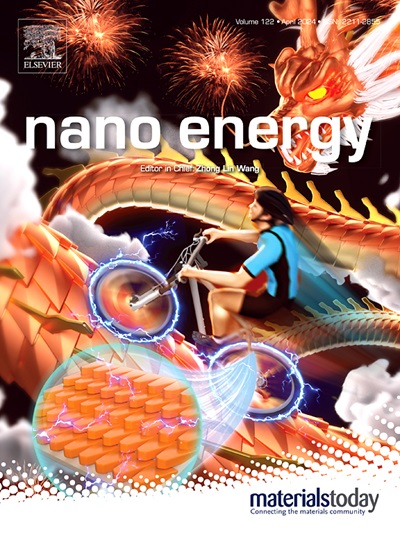Understanding the Fundamentals of Contact Electrification in Polymer-Polymer Based Systems Using Density of States and Mulliken Charge Analysis
IF 16.8
1区 材料科学
Q1 CHEMISTRY, PHYSICAL
引用次数: 0
Abstract
Contact electrification (CE) is the phenomenon of charge transfer that occurs due to the contact or friction between two different affinity materials. Understanding the fundamentals of contact electrification in polymer-polymer-based interaction is crucial. To elucidate the fundamentals of contact electrification in polymer-polymer systems, we performed a computational analysis of common tribopolymers interaction with different amino acids. Molecular descriptors, density of states (DOS), electron density difference (EDD) mapping, and Mulliken charge analysis were employed to characterize the influence of electrophilicity or nucleophilicity, the role of triboactive sites, and the changes in energy states during charge transfer kinetics in polymer- polymer-based interactions during CE. This study offers new insights into charge transfer kinetics during CE by analyzing different interaction distances. The study leads to the proposition of a refined theory for understanding contact electrification in polymer-polymer-based systems.

利用态密度和Mulliken电荷分析了解聚合物-聚合物基体系中接触通电的基本原理
接触通电(CE)是由于两种不同亲和材料之间的接触或摩擦而发生的电荷转移现象。了解聚合物-聚合物基相互作用中接触通电的基本原理是至关重要的。为了阐明聚合物-聚合物体系中接触通电的基本原理,我们对常见的摩擦聚合物与不同氨基酸的相互作用进行了计算分析。采用分子描述符、态密度(DOS)、电子密度差(EDD)作图和Mulliken电荷分析来表征亲电性或亲核性的影响、摩擦活性位点的作用以及CE过程中聚合物-聚合物相互作用中电荷转移动力学过程中能量状态的变化。本研究通过分析不同的相互作用距离,为电催化过程中的电荷转移动力学提供了新的见解。该研究提出了一种理解聚合物-聚合物基体系中接触通电的精炼理论。
本文章由计算机程序翻译,如有差异,请以英文原文为准。
求助全文
约1分钟内获得全文
求助全文
来源期刊

Nano Energy
CHEMISTRY, PHYSICAL-NANOSCIENCE & NANOTECHNOLOGY
CiteScore
30.30
自引率
7.40%
发文量
1207
审稿时长
23 days
期刊介绍:
Nano Energy is a multidisciplinary, rapid-publication forum of original peer-reviewed contributions on the science and engineering of nanomaterials and nanodevices used in all forms of energy harvesting, conversion, storage, utilization and policy. Through its mixture of articles, reviews, communications, research news, and information on key developments, Nano Energy provides a comprehensive coverage of this exciting and dynamic field which joins nanoscience and nanotechnology with energy science. The journal is relevant to all those who are interested in nanomaterials solutions to the energy problem.
Nano Energy publishes original experimental and theoretical research on all aspects of energy-related research which utilizes nanomaterials and nanotechnology. Manuscripts of four types are considered: review articles which inform readers of the latest research and advances in energy science; rapid communications which feature exciting research breakthroughs in the field; full-length articles which report comprehensive research developments; and news and opinions which comment on topical issues or express views on the developments in related fields.
 求助内容:
求助内容: 应助结果提醒方式:
应助结果提醒方式:


